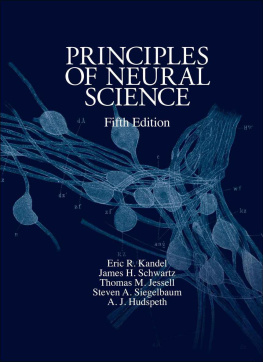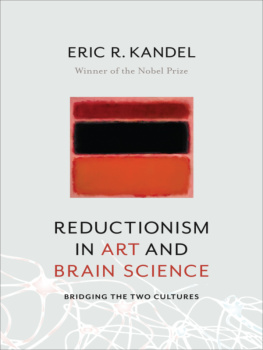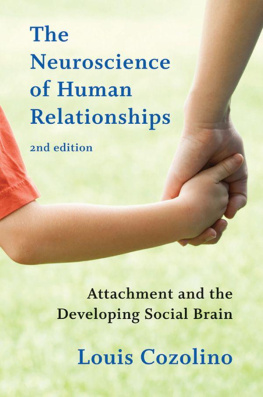Eric R. Kandel - Principles of Neural Science
Here you can read online Eric R. Kandel - Principles of Neural Science full text of the book (entire story) in english for free. Download pdf and epub, get meaning, cover and reviews about this ebook. year: 2012, publisher: McGraw-Hill Professional, genre: Science. Description of the work, (preface) as well as reviews are available. Best literature library LitArk.com created for fans of good reading and offers a wide selection of genres:
Romance novel
Science fiction
Adventure
Detective
Science
History
Home and family
Prose
Art
Politics
Computer
Non-fiction
Religion
Business
Children
Humor
Choose a favorite category and find really read worthwhile books. Enjoy immersion in the world of imagination, feel the emotions of the characters or learn something new for yourself, make an fascinating discovery.
- Book:Principles of Neural Science
- Author:
- Publisher:McGraw-Hill Professional
- Genre:
- Year:2012
- Rating:3 / 5
- Favourites:Add to favourites
- Your mark:
Principles of Neural Science: summary, description and annotation
We offer to read an annotation, description, summary or preface (depends on what the author of the book "Principles of Neural Science" wrote himself). If you haven't found the necessary information about the book — write in the comments, we will try to find it.
Now updated: the definitive neuroscience resourcefrom Eric R. Kandel, MD (winner of the Nobel Prize in 2000); James H. Schwartz, MD, PhD; Thomas M. Jessell, PhD; Steven A. Siegelbaum, PhD; and A. J. Hudspeth, PhD
900 full-color illustrations
Deciphering the link between the human brain and behavior has always been one of the most intriguingand often challengingaspects of scientific endeavor. The sequencing of the human genome, and advances in molecular biology, have illuminated the pathogenesis of many neurological diseases and have propelled our knowledge of how the brain controls behavior.
To grasp the wider implications of these developments and gain a fundamental understanding of this dynamic, fast-moving field, Principles of Neuroscience stands alone as the most authoritative and indispensible resource of its kind.
In this classic text, prominent researchers in the field expertly survey the entire spectrum of neural science, giving an up-to-date, unparalleled view of the discipline for anyone who studies brain and mind. Here, in one remarkable volume, is the current state of neural science knowledgeranging from molecules and cells, to anatomic structures and systems, to the senses and cognitive functionsall supported by more than 900 precise, full-color illustrations. In addition to clarifying complex topics, the book also benefits from a cohesive organization, beginning with an insightful overview of the interrelationships between the brain, nervous system, genes, and behavior. Principles of Neural Science then proceeds with an in-depth examination of the molecular and cellular biology of nerve cells, synaptic transmission, and the neural basis of cognition. The remaining sections illuminate how cells, molecules, and systems give us sight, hearing, touch, movement, thought, learning, memories, and emotions.
The new fifth edition of Principles of Neural Science is thoroughly updated to reflect the tremendous amount of research, and the very latest clinical perspectives, that have significantly transformed the field within the last decade.
Ultimately, Principles of Neural Science affirms that all behavior is an expression of neural activity, and that the future of clinical neurology and psychiatry hinges on the progress of neural science. Far exceeding the scope and scholarship of similar texts, this unmatched guide offers a commanding, scientifically rigorous perspective on the molecular mechanisms of neural function and diseaseone that youll continually rely on to advance your comprehension of brain, mind, and behavior.
FEATURES
- The cornerstone reference in the field of neuroscience that explains how the nerves, brain, and mind function
- Clear emphasis on how behavior can be examined through the electrical activity of both individual neurons and systems of nerve cells
- Current focus on molecular biology as a tool for probing the pathogenesis of many neurological diseases, including muscular dystrophy, Huntington disease, and certain forms of Alzheimers disease
- More than 900 engaging full-color illustrationsincluding line drawings, radiographs, micrographs, and medical photographs clarify often-complex neuroscience concepts
- Outstanding section on the development and emergence of behavior, including important coverage of brain damage repair, the sexual differentiation of the nervous system, and the aging brain
- NEW! More detailed discussions of cognitive and behavioral functions, and an expanded review of cognitive processes
- NEW! A focus on the increasing importance of computational neural science, which enhances our ability to record the brains electrical activity and study cognitive processes more directly
- NEW! Chapter-opening Key Concepts provide a convenient, study-enhancing introduction to the material covered in each chapter
- Selected Readings and full reference citations at the close of each chapter facilitate further study and research
- Helpful appendices highlight basic circuit theory; the neurological examination of the patient; circulation of the brain; the blood-brain barrier, choroid plexus, and cerebrospinal fluid; neural networks; and theoretical approaches to neuroscience/ul>
Eric R. Kandel: author's other books
Who wrote Principles of Neural Science? Find out the surname, the name of the author of the book and a list of all author's works by series.














